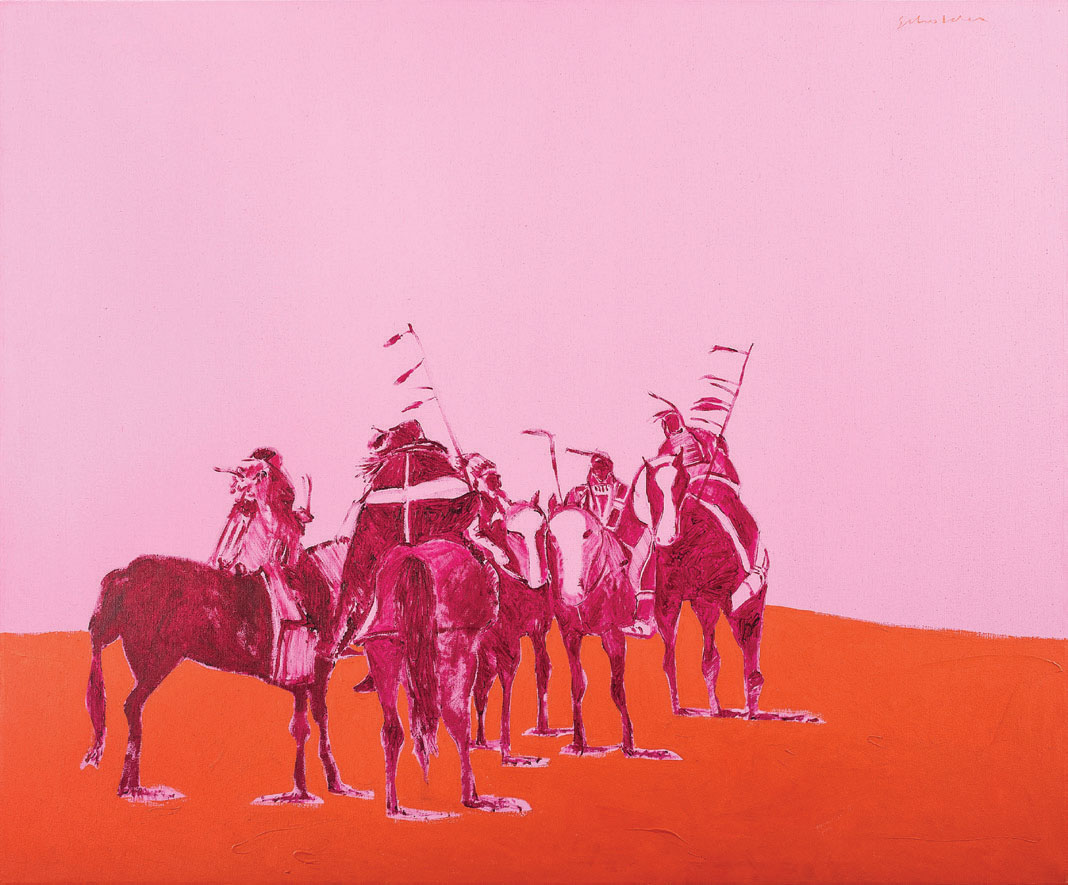
04 Jan Editors Note: Western Daydream
When the term “Western art” appears, what do you think of first? Do paintings by explorer artists George Catlin and Albert Bierstadt come to mind? Or do you think of the pottery, beadwork, and hand-dyed rugs made by the Indigenous artists of the Southwest? Perhaps you first associate Western art with cowboy artists Charlie Russell and Frederic Remington. Or maybe Western art is exemplified by work from the Taos Society of Artists or Georgia O’Keeffe.
The beauty of Western art is that it’s all of these moments and expressions — and so much more. The West is a dynamic, complex region that inspires no shortage of creative meaning. During the latter half of the 20th century, for example, new voices emerged in the genre, as Native American artists infused traditional artistic styles with themes from contemporary life. The works of Fritz Scholder, for example, challenged stereotypes and portrayed Native Americans in a more complex light than historic paintings had previously allowed. And moving into the early 21st century, Western artists began exploring issues surrounding conservation, urbanization, and the environment.
In this issue, we see how the West is a muse for experimentation, from painter Robin Cole’s paintings that were influenced by motherhood to Angela Babby’s enameled glass mosaics to the way that a life in art seemed to choose painter Tom Browning. We see how regional architectural styles, from a contemporary Colorado homestead to a Southern California Mission Style ranch, are reimagined for today.
As Western American art continues to evolve, I hope you enjoy the many ways that the artists and architects profiled in this issue add their voices to its story.
Christine Rogel, Editor in Chief
christine@westernartandarchitecture.com






No Comments